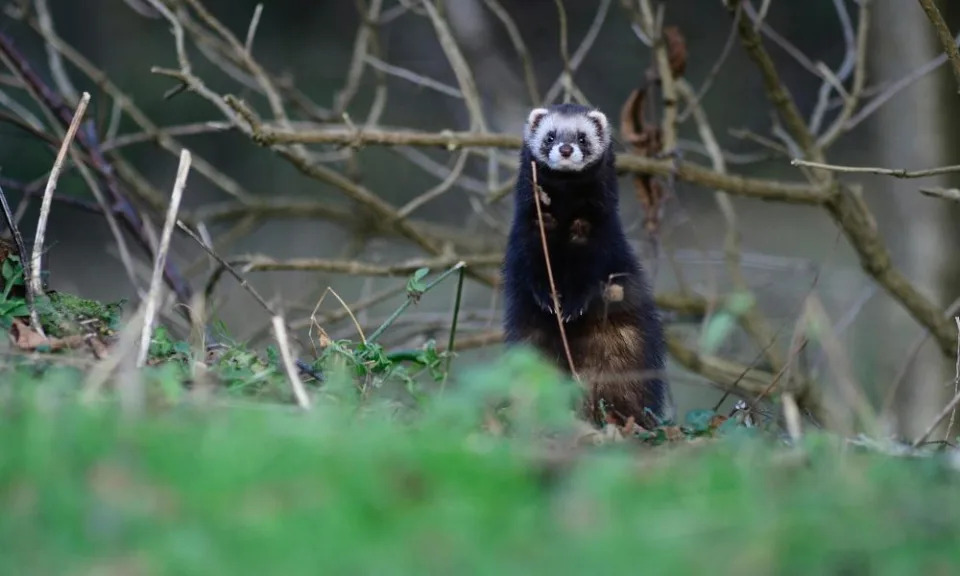Mammal Society page ("Saving Britain's Wildlife") carried a post about hedgehogs, foxes and badgers and here are some quotes.
The interactions between hedgehogs, badgers and foxes are essential processes in sustainable functioning Earth systems, wrongly portrayed as victims and demons, explains Elspeth Stirling.
https://www.mammal.org.uk/2023/06/hedgehogs-predators-and-the-truths-behind-their-decline/?fbclid=IwAR3C9HrusTzsRbFDmJsznxAp-2caARsu_NKYnRYZm3rJmgHlQ4LZOSBKnrc
If you look at farming websites you find that foxes and badgers are the most frequently mentioned factor in opinions about lamb losses, despite field and forensic studies spanning the last 40 years consistently demonstrating that in under 2% of lamb deaths a wild predator may be a contributing factor (although not necessarily the significant factor)
Response: Some official figures state 1% and in these cases no lambs were seen killed by foxes but the biggest cause of lamb death was bad animal husbandry which, naturally, farmers are not going to accept. Naturalists in the 19th and 20th century observing foxes in a filed of sheep noted the foxes were eating the rich afterbirth as well as nutrient rich sheep droppings. Even dead lambs were not necessarily touch by foxes though a free meal is a free meal.
Roads and traffic – estimates indicate that over 167,000 hedgehogs are killed annually in Great Britain, and it is ‘unlikely that this level of mortality is sustainable’
Response: I once kept records of dead hedgehogs I saw on roads around the area where I live. I eventually gave up as there were so many and absolutely nothing I could do about it or get done about it. Drivers are drivers and basically most do not give a crap if they hit a pet cat so what is a hedgehog to them? And I suspect that road deaths may be far higher in towns and cities.
(c)2023 Vale Wildlife GroupThe conditions hedgehogs rely on for life are vanishing and it’s down to human practices.
It’s a tragedy when a hedgehog dies – but they’re the victims of land management practices that push wildlife aside. People have killed foxes, badgers and small wild mammals for centuries, although this has failed to achieve any lasting improvements in the perceived harms. If the problem is that the remnant hedgehog population is at a tipping point, then the approach is to focus on reviving the natural conditions that will support their revival and maintain the population naturally without requiring artificial inputs.
Response: Humans have always been the biggest contributing factor to species decline or extinction. What do we do if we find orphaned hoglets? Well, during the 1990s and early to mid 2000s the Bristol RSPCA centre refused to take them in when found. My neighbour quite clearly explained to the RSPCA that the sow was dead on the road so was not "going to return" as they suggested to her -and to me when I followed up for her. I was told quite clearly: "We do not have the space, staff or time to look after them. If they are brought in we would put them to sleep. Put them back and let nature take its course".
Thankfully more and more hedgehog rescues have emerged as well as wildlife rescues that deserve far more financial support. Now, of course, with the hedgehog in such massive decline people take some notice.
(c)2023 British Fox Study
Here is something people do not know: for centuries right up into the 20th century bounties were paid for each hedgehog killed (rather as bounties were paid to exterminate British foxes -which they did by the 1860s- wild cats and badgers -the wild cats were exterminated and the reason badgers survived would shock quite a few people). Yes, "the gardeners friend" was deliberately killed mainly in the country to preserve the eggs of ground nesting game birds and in town...probably just because they were there. At the same time poisons of all sorts were put on gardens from slug pellets to worse.
Humans have killed hedgehogs in the millions over the centuries and, yes, people are still doing it now and snaring and illegal traps are taking their toll "out of sight" and game keepers are still killing them. Then again, the badger is a "protected species" and survived centuries of decimation to now be driven to the verge of extinction legally,
Rather like foxes and badgers that are declining at a scary rate in the UK countryside it is very likely that in 20 years time the only badgers, foxes and hedgehogs to be seen will be urban ones, Foxes kill hedgehogs? I have plenty of first hand observations as well as photographs and video footage of foxes and hedgehogs totally ignoring each other as the eat with inches of each other and the only aggression noted came from the hedgehogs! I have seen similar with badgers and hedgehogs and in urban areas the reason there is no badger predation of hedgehogs may well be down to the fact that there are feeders. Why chase after something when you can get a full feed just by turning up -even then looking for worms and other insects seems more important than the spiky little thing.
(c)2023 Time Out With Nature
In the countryside a really hungry badger or fox may well kill a hedgehog in desperation. However, even here there are other resources. At one badger sett a badger was seen on several occasions carrying back a dead rabbit. The initial thought was that the rabbits were shot and left for wildlife to dispose of, however, it turned out that there was a road close by and the rabbits were killed by cars racing along it.
In the 1860s we lost the Old British foxes, the wild cat, the Old red squirrel and many more species (the 19th century is seen as the "Golden Age of Hunting" when every and anything (not kidding) was perfect to snare, shoot, poison and hunt with dog packs. Of course, these losses were "replaced" by imports from Europe to "continue the sport".
It is important that we understand what is killing off wildlife and habitats. We saw the badger blamed for hedgehog decline.. Then we judged to foxes killing off hedgehogs. Both blamed for the hunting agenda or by people or organisations not wanting to accept that humans were the greatest (in many places only) culprits. It is why dogma regarding wildlife continues because the truth is too harsh for "a nation of animal lovers" -a myth in itself.
Please read the article by Stirling but always bear in mind that humans always love to find a scapegoat.














